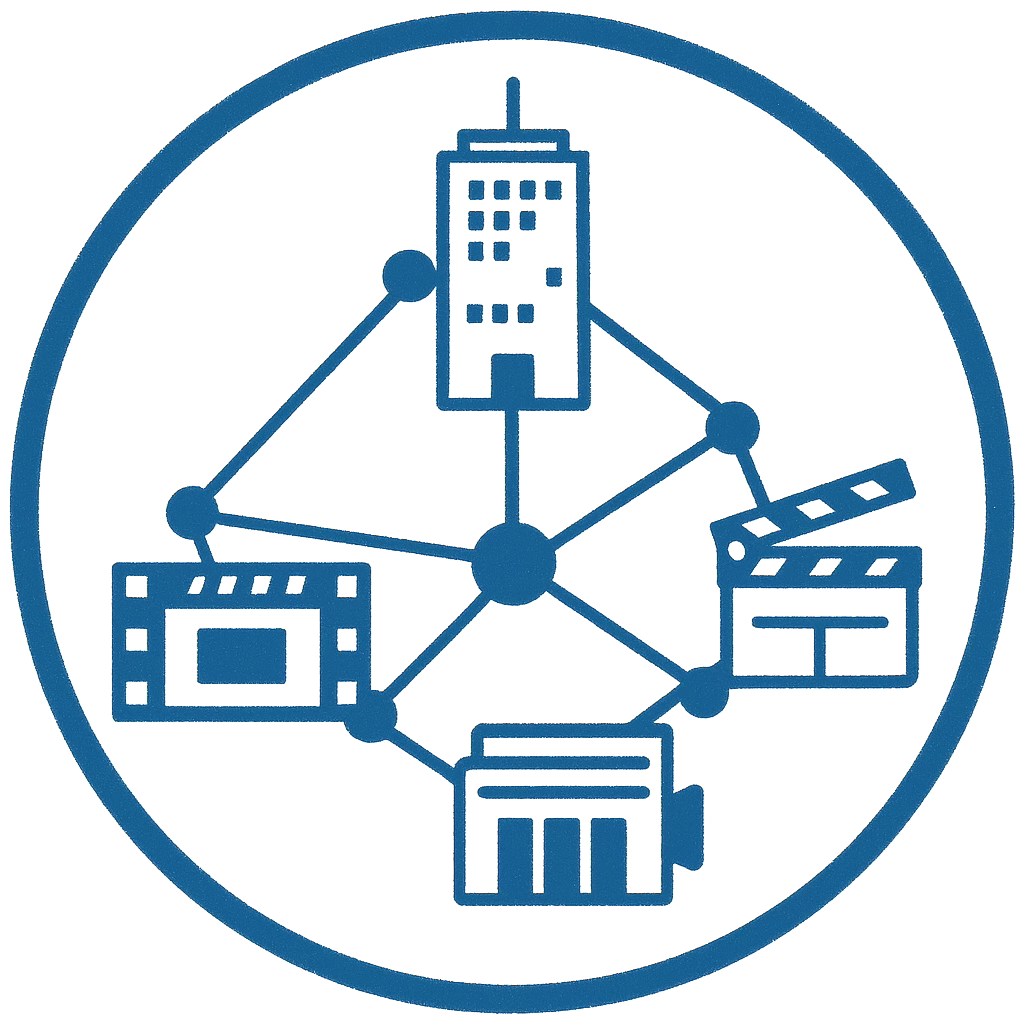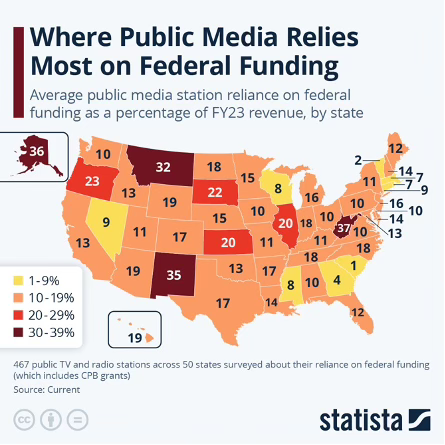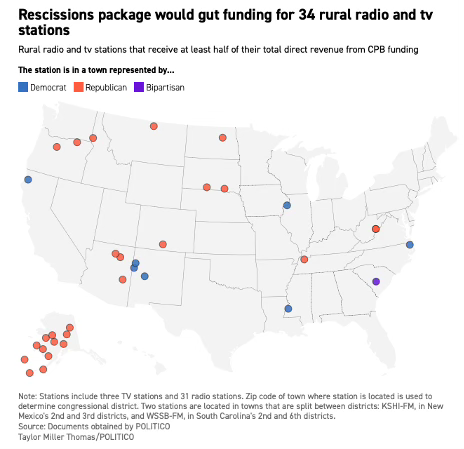Media infrastructure isn’t sexy. Funding the pipes that bring us powerful independent storytelling doesn’t get your name on a screen or result in an invitation to the Oscars. Yet without it, we have no way of ensuring that under-told stories from diverse perspectives or narratives of hope that reflect powerful new visions for the future can reach our shared consciousness. Our moral imagination is our collective compass for the future and we need everyone’s perspective to point us in the right direction. This post explores the current state of the narrative ecosystem including challenges to public media and the destabilizing influence of AI, but it also highlights promising new research and distribution models that point a way forward. We need to protect public media infrastructure and invest in these emerging archetypes if we want a narrative ecosystem that serves people and the planet to emerge and flourish.
The State of the Narrative Ecosystem
In an era where digital platforms prioritize sensationalism over substance, the future of independent media hangs in the balance.
- Keri Putnam, film and television producer, former executive director, Sundance
Telling stories that can shift narratives requires a robust ecosystem of storytellers, research, frameworks, funders, partners, and distribution. Unfortunately, the current state of the narrative ecosystem is anything but robust, especially given the collapse of the media and entertainment tech industry and current efforts to defund public media. In film, the streaming market has evaporated with the consolidation of players and the theatrical market has yet to return to pre-pandemic levels. 950,000 jobs were lost in media entertainment tech in 2023 and established players in the industry are struggling or shutting down, including Jeff Skoll’s much-mourned decision to close Participant Media, the pre-eminent producer of social impact media that legitimized the telling of stories that move audiences to action on critical issues.
The ecosystem for film was fragile from the start, depending on film festivals, distributors, independent theaters, and of course public television. Starting in the late 2000s, streamers like Netflix began to dominate the landscape, offering significant sums for new content and dwarfing existing players, such that many longstanding companies shifted to new approaches, small art house theaters closed, and the original ecosystem became even more tenuous. Now streamers have consolidated to only a handful of major players and are prioritizing “two screen” programming – reality TV, true crime, celebrities, food, and sports – where consumers can comfortably work on their laptops and watch at the same time.
With films not being picked up, fewer industry players in a position to engage, and sponsorship nonexistent, experts say the big film festivals are “dying,” creating a crisis in the sector and further limiting distribution opportunities for films. This leaves almost no built-in market for quality content with a diversity of perspectives or an alternative world view. Content creators cannot help but observe that these developments lead to increased “curation about white men, by white men” on these traditional platforms.
Challenges to Public Media
Concurrent with challenges in the entertainment industry, we are also seeing serious threats to public media in the United States, the only broadly accessible platform for news and perspectives with the explicit goal of serving public good and historically one of the few avenues for wide distribution of documentary content. Even before the recent change in administration, The Heritage Foundation’s Project 2025 called for a total shutdown of public media, including eliminating funding for the Corporation for Public Broadcasting (CPB), National Public Radio (NPR), and the Public Broadcasting System (PBS). Following through on these recommendations, the US House of Representatives passed a rescissions package earlier this month that eliminates $1.1 billion in previously approved funding for CPB, resulting in a national outcry and significant pressure on the Senate to eliminate the cuts in the reconciliation process.
In reality, these funds are far more critical for public radio stations than they are for flagship public media entities. PBS receives about 15% of its annual revenue through CPB, and NPR only gets about 1% directly from CPB (plus fees from local stations to air their content).[1] All the same, those knowledgeable about the public media system anticipate a domino effect with smaller stations unable to keep their doors open, which will in turn reduce the reach and feasibility of supporting organizations like NPR, PBS, and the network of organizations that create the public media ecosystem.
Yet public media is often the only source of news and entertainment for key demographics, such as rural communities and incarcerated populations. And because it is so vulnerable in this moment, public broadcasting is increasingly skittish about airing potentially sensitive content, further closing down the aperture for diverse points of view. As alternate avenues for accessing nonfiction and socially relevant content become scarcer, we need to understand documentary and journalism as a public necessity. This is especially true as classrooms are increasingly politicized and teachers no longer have the freedom to be explicitly address issues like systemic racism, which so deeply shape our current reality.
Emergent Possibilities
On a more positive note, veteran film and television producer Keri Putnam recently conducted a landscape study of the independent film market which found that the potential audience for independent film far exceeds the number of people who currently watch. In fact, Putnam’s survey suggests a potential US audience of 77 million people who say they would be willing to pay for a channel dedicated to independent film and documentary, more than double the current audience size.[4] And while this may be aspirational, it points to a significant untapped market which deserves and could sustain a robust ecosystem of distribution options.
While we are still far from having a broad set of distribution alternatives to public media and streaming, there are definitely points of light emerging. The current challenges have spurred creative new funding models that build in distribution upfront, without relying on streamers. For example, the nonprofit Decentralized Pictures uses blockchain technology to administer a film fund where anyone with Internet access can submit film projects or have a say in which projects are supported, using points they have earned over time by adding value to the community. The more people add their currency to a project, the more likely it is to receive funding and the larger the built-in audience will be. Similarly, Angel Studios targets the underserved Christian market and leverages the creator economy to build and scale its audience. Their crowdfunded model relies on the feedback of 300,000+ guild members to determine which projects to greenlight, resulting in guaranteed audiences for films like Sound of Freedom and TV series like The Chosen. Regardless of whether one agrees with their content, the model is undeniably effective.
In addition, there are platforms like Jolt, which provides time-limited opportunities for audiences to watch compelling films overlooked by mainstream media and curated from top film festivals and filmmakers, and Kinema, which offers a platform for filmmakers to manage their community screening tours and a mechanism for community organizations to develop creative cinema spaces and host their own screening events, drawing from a library of films across every major issue. These are the first movers but if embraced and supported, they represent promising new opportunities that can fortify and underpin existing infrastructure and open up potential for storytelling abundance.
AI’s Destabilizing Influence
As with the rest of world, the introduction of AI in storytelling is expanding these possibilities and creating serious concerns. Film and brand expert Brian Newman points out that any mention of AI still engenders a strong negative response from audiences, but says what artists are able to do with it is fascinating. For example, AI enables projects like Eno, a career spanning documentary about musician Brian Eno that uses generative AI to continuously re-edit new versions such that no two audiences see the same film. Rather than eliminating jobs, making the film requires as many or more editors, they are just moving much faster. AI also enables new forms of interactive storytelling, with personalized storylines and multiple story paths based on user choices, and virtual/augmented reality with real-time object generation and animation that can interact with users. Creators are also partnering with AI to build more compelling storylines and deepen their character development, as well as to assist with video editing and soundtracks, streamlining post-production. There are even AI tools to analyze audience emotions and optimize storytelling for emotional impact.
And yet these same abilities raise serious concerns about the impact of AI on storytelling and society, such as the homogenization of content and the threat to intellectual property rights. If AI tools become more ubiquitous, they will likely create biases toward approaches or devices that have been deemed most effective, with the potential systematically to reduce independent perspective and creativity. And since AI is trained on human-created content, it inevitably reflects that content in its output, generally without acknowledgement or compensation back to the original creators. A-List celebrities may be able to protect the use of their image, but for many creatives it will be much harder to prevent uncredited use of their work.
All these challenges lead to job displacement for film and media professionals, as well as creating an opening for the proliferation of mis/disinformation, the perpetuation of bias, and the potential for audience manipulation. In the documentary space, it will be increasingly difficult to distinguish real footage from AI-generated content, undermining the credibility of all content that does not align with dominant narratives. Clear guardrails are required to ensure that filmmakers and storytellers can harness the benefits of AI while mitigating its risks and limitations.
Conclusion
In summary, the media and entertainment ecosystem is facing significant structural challenges, especially with regard to distribution and access, and is further destabilized – as so many industries are – by the rapid evolution of generative AI. Yet there are significant points of light in the unmet demand for independent media content and the new fledgling distribution models that are starting to gain traction. In this moment of flux, we need public media more than ever to ensure everyone has access to the independent reporting and storytelling that will help us understand our world and move forward together. Now is the time to engage and double down—not to sit back. The work ahead is daunting, and we can’t afford to lose the infrastructure we’ve fought so hard to build.
[1] Senators question Trump plan to kill federal funds for PBS, NPR and some foreign aid, Scott Neuman, NPR, 6/25/2025
[2] Where Public Media Relies on Federal Funding Most, Anna Fleck, 6/4/2025
[3] ‘Catastrophic’: Rural public media stations brace for GOP cuts, Aaron Pellish, 6/12/2025
[4] US Independent Film Audience and Landscape Study, Kerith Putnam, Shorenstein Center on Media, Politics and Public Policy, Harvard Kennedy School







Ooooooh!!! I love this BUT SOMETHING SO IMPORTANT MISSING HERE! We must must must engage and connect wth the work of others, and in this caee, the COLOUR CONGRESS report is a MUST to link to this article. Color Congress are "an ecosystem-builder that is committed to organizations led by people of color that serve nonfiction filmmakers, leaders, and audiences of color across the United States and US islands. They are a membership organization that includes film festivals, artist support and narrative change entities, micro cinemas, filmmaker collectives, and public media. They serve by supporting, resourcing, connecting and championing organizations to build collective power". This article is great but misses out from including their powerful deeply researched voice.